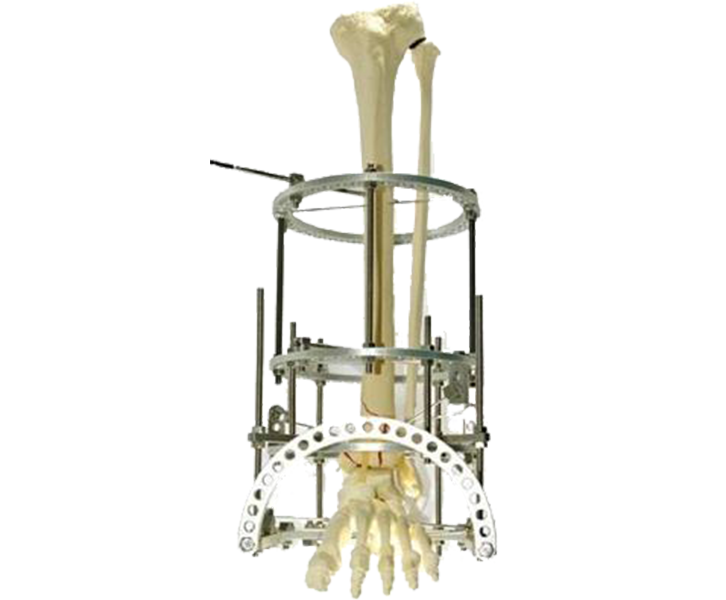Ilizarov Technique
- Home
- Specialities
- Ilizarov Technique

Ilizarov Technique
The Ilizarov technique uses circular and hemispheric external fixators stabilized by multiple narrow wires, the Monticelli–Spinelli method uses a single circular fixator to hold epiphyseal wires and two diaphyseal level rings held together by longitudinal rods between which the metaphyseal corticotomy was performed, and the Orthofix and Monotube methods use a unilateral fixator with two upper and two lower 5-mm-wide pins
Ilizarov method
In the Ilizarov approach, vascularity is increased by corticotomy and application of a circular external fixator. Although infected nonunions frequently have been successfully treated without debridement, some authors recommend open debridement to remove necrotic and infected segments, followed by bone transport into the region and soft-tissue coverage.
One study advocated segmental excision of the nonunion site followed by distraction osteogenesis. Catagni recommended compression for hypertrophic nonunions with minimal infection and no sequestered bone to increase formation of repair callus and vascularity. Monofocal compression also can be used for infected hypertrophic nonunions with deformity.
Combinations of several of the methods described for infection can be used for treatment of the separate components of a complex nonunion, but the Ilizarov method allows simultaneous treatment of all components, includingangular, rotary, and translational deformities; shortening; and segmental bone loss.
Although dramatic results can be obtained, this method is technically demanding and requires thorough training and experience. It is recommended that only surgeons knowledgeable in its biologic basis and the techniques required for its safe, effective application use this method.
Deformities of 10 or 15 degrees can be corrected immediately by frame application; larger deformities should be corrected gradually. Hypertrophic nonunions can be treated by gradual correction of the deformity, followed by compression. Atrophic nonunions with shortening can be treated by compression at the nonunion accompanied by a corticotomy in the metaphyseal region of the same bone and gradual lengthening through the corticotomy.
Ilizarov showed marked hypervascularity of the limb and bone after corticotomy and gradual distraction. Conceivably, the corticotomy provides some of the same biologic benefits as a bone graft
